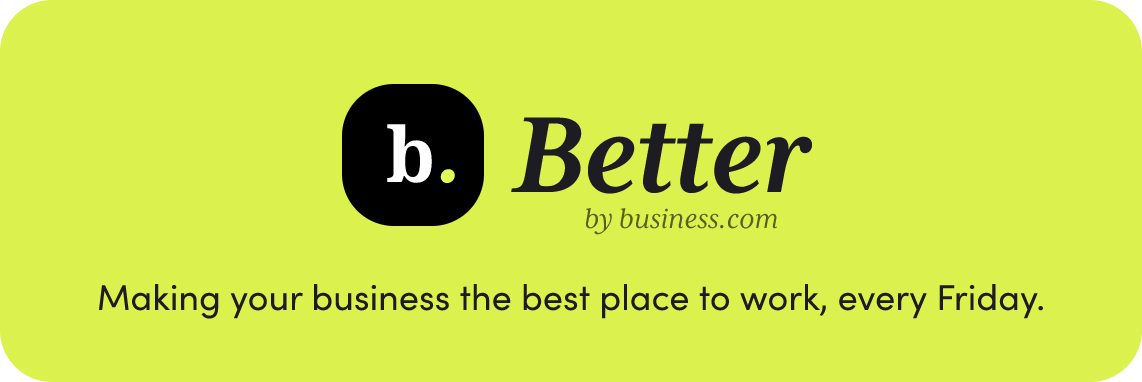It’s a summer Friday and perfect beach weather … so, do your weekend plans include the office?
Nearly 40% of small business owners have declined to take a weeklong vacation for over a year, according to FreshBooks’ latest annual polling. Half cited financial worries and many either didn’t have (or didn’t trust) employees to keep things running smoothly in their absence.
Running a successful business requires an incredible work ethic, but without any rest or self-care, there’s a risk of running yourself ragged. If you can’t remember the last time you felt sand between your toes, check out our 7-step guide for taking a vacation as a small business owner — and don’t forget the sunblock.
|
|
|
Is the Office Dress Code Permanently Out of Fashion?
|
During the pandemic, numerous fashion experts predicted that post-COVID style would be extra formal. We would’ve missed our dressy clothes so much while stuck at home, the reasoning went, that casual anything would be a faux pas; we’d never be caught dead in a T-shirt again.
That didn’t really pan out. Only 1% of American workers want a business-formal dress code, according to Zippia. Even world leaders don’t want to wear ties anymore.
Although you shouldn’t wear ratty sweats to the office post-gym, business formal has widely given way to business casual, with a big emphasis on the “casual.” It’s a convergence of the lockdown-powered rise of athleisure, the mainstreaming of streetwear, and the blurring of gendered clothing items.
|
|
|
Individual workplaces differ — some buttoned-up companies still have a no-denim policy — but for the most part, we’ve entered the era of elevated soft clothes: looser fits in cozy, earthy fabrics. The slim-fitting severe lines of millennial workwear are out. So say goodbye to ultra-tailored power suits and constricting skirts … and hello to cropped, breathable linen. Why torture yourself with high heels slicing into your ankles when a nice pair of white sneakers will do?
The 2023 workwear landscape is a delightful contradiction: it’s getting more comfortable but also more expressive. This is the year we’re finally allowed to be ourselves at work. Think statement pieces, selective use of bold patterns, and meaningful pops of vibrant color (think Barbiecore) or pastels. Many of these new staples work across the gender spectrum:
- Wide-legged trousers
- Casual, loose-fitting blazers
- Neutral layers
- Platform sneakers
- Matching knit sets
- Jumpsuits accessorized with a necklace and nice flats
- Maxi skirts or lightweight high-waisted pants
- Roll-necks or scarves under button-ups
These looser guidelines can get a little confusing. If you’re unsure of where your employer stands — or if you own the business and want to appear less stuffy without losing authority — err on the side of caution. Dress it down from there based on what flies in the space. This year, it’s a little less of a dress code, and more of a dress vibe.
|
|
|
Texturism: Be Aware Of This Unfair Workplace Bias
|
|
|
Dr. Steven Rogelberg is a chancellor’s professor at UNC Charlotte, former president of the Society for Industrial and Organizational Psychology, and author of Glad We Met: The Art and Science of 1:1 Meetings.
Biases come in many different forms, some overt and some subtle. Texturism refers to the bias encountered by individuals with hair textures that are kinkier and tightly curled. A recent CROWN Workplace Research study reported on race-based hair discrimination, and the findings were important:
- Black women’s hair, in comparison to white women’s hair, was more likely to be perceived as unprofessional by a wide margin.
- Black women reported that they felt they had to straighten their hair in order to be more successful in interviews.
- Around 20% of black women reported being sent home from work because of their hair, and 25% believed they were denied employment due to their hair.
- Compounding this bias is the fact that certain chemicals used to straighten hair are associated with increased risk of cancer.
Be aware that race-based hair discrimination exists and that you have to guard against it. Remind others about this potential bias. Review your company materials and policies to acknowledge this type of bias as wrong and inappropriate. Work to create an inclusive work environment so that all employees have a fair and welcoming experience at work.
|
|
|
The Eternal Sunshine of Consumer Motivations
|
Eternal Sunshine of the Spotless Mind is remembered as a classic ‘00s movie for its psychedelic take on love and memory, but it also has a lesson for business people about consumer decision-making.
The film’s two main characters, Joel (Jim Carrey) and Clementine (Kate Winslet), both hire cutting-edge tech company Lacuna to erase every memory related to their tumultuous relationship. What would motivate them to make such an extreme choice?
Regulatory focus theory. Social psychologist E. Tory Higgins, who formulated the theory in 1997, broke down human motivations into:
- The need for advancement (promotion)
- The need for security (prevention)
In Eternal Sunshine, Clementine — a promotion-focused character — wants a fresh start going forward; Joel, a prevention-focused character, wants to avoid his painful feelings from looking backward. Although they have different motivations, they purchase the same service.
When advertising a promotion-oriented item (such as a home fitness machine), businesses should emphasize the potential rewards and growth opportunities from using their product. But prevention-oriented items (such as bike lock cables and waterproof phone cases) should be marketed with a focus on security and durability.
These two emotional systems can also act in tandem. A skincare company might emphasize the positive outcome of using its anti-aging sunscreen product (a more youthful appearance) while also avoiding the negative outcome of not using it (a higher risk of skin cancer).
When marketing to consumers, what desire are you fulfilling and what worry are you alleviating? Don’t erase those questions from your memory.
|
|
|
On July 28 in Business History:
|
- 1907: Earl Tupper, inventor of Tupperware, was born.
- 1943: The U.S. ended coffee rationing, which began in November 1942 to keep American troops caffeinated.
- 1972: More than 40,000 U.K. dock workers began a strike that closed British seaports for the second time in two years.
- 1978: Gold reached a record high of $200 per ounce.
- 2009: The Tanzania Women’s Bank was created to promote the economic security of the country’s women at all income levels, including female entrepreneurs. It was the first such bank in Africa.
Need a jolt of caffeine? Find out which coffee varieties pair best with work tasks.
|
|
|
Written by Dan Ketchum, Antonio Ferme, and Ali Saleh. Comic by John McNamee.
|
|
|
|






_1.jpg)